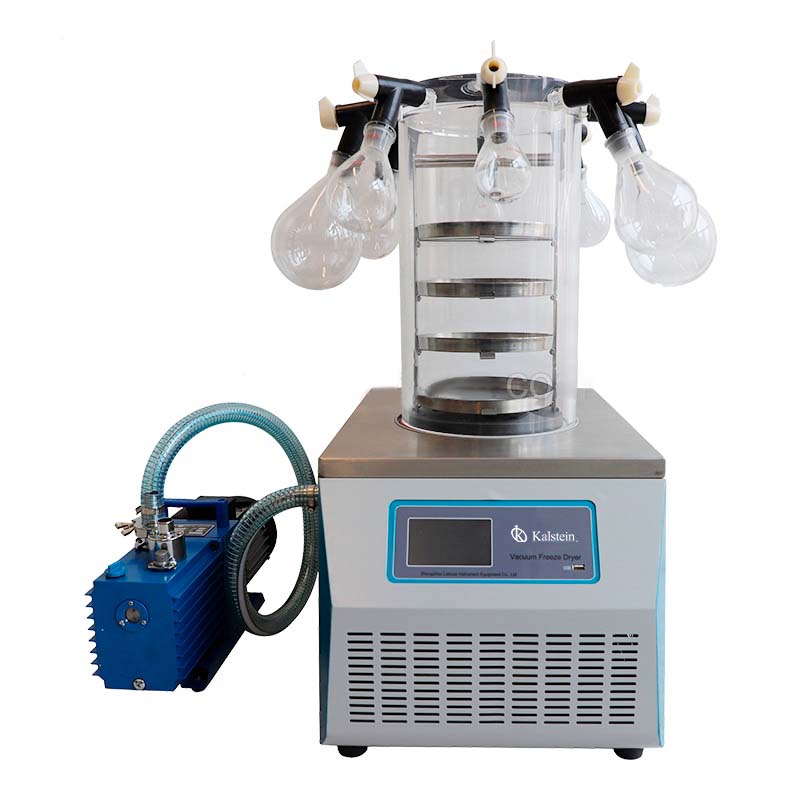Freeze-drying has become standard practice in the pharmaceutical industry, since its first applications began in the 1940s. Since then, the freeze-dryer has evolved from a simple vacuum drying unit to a highly sophisticated, integrated system, combining a series of processes to guarantee systematic production to technical and biological specifications.
Freeze-drying is a process designed to separate the liquid (water or other solvent) from an organic material or solution, by freezing then sublimating the ice under reduced pressure, thus generating a dehydrated product without altering its qualitative and quantitative composition, i.e. preserving the molecular structure of the substance to be preserved. This is achieved by using a freeze-dryer.
A freeze-dryer consists of a dry or freeze-drying chamber, a condenser with a refrigeration circuit and a vacuum system.
Freeze-dried products include antibiotics, bacteria, sera, vaccines, diagnostic drugs, biotechnology products, proteins, as well as products containing cells, tissues and chemicals. The product undergoes a freezing process at sub-atmospheric pressure. Then, in an initial drying phase defined as primary drying, water is removed (as ice) by sublimation; in the second phase, secondary drying is removed by desorption.
Freeze-drying is considered one of the safest and most widely used techniques for sample preparation in the pharmaceutical industry. It has been used in the preservation of biological materials such as blood plasma, serum, hormones and biologically complex pharmaceuticals such as vaccines, sera and antidotes, as well as in many diverse research projects in this industry, as this process offers excellent retention. .of the molecular structures of biological samples.
This is why freeze-dryers are of vital importance in the pharmaceutical field, since the process used in this equipment aims to reduce the lability of these very delicate components present in the formulation.
A freeze-drying cycle can be divided into four main stages: freezing, evacuation, primary drying and secondary drying. Each of these stages is important in its own right, although the most critical factors to be considered in the process occur during freezing and primary drying.
Advantages of freeze-drying
- Maintains the chemical stability of the product, enzyme preparations are not altered.
- Inhibits the growth of micro-organisms.
- Inhibits deterioration through chemical reactions. Oxidation phenomena are eliminated, since it is processed and packaged under vacuum.
- Facilitates product storage, transport and preservation. As the residual moisture is negligible, the product can be stored for an unlimited period of time, providing long-lasting stability.
- It allows the properties of the preserved material to be recovered simply by rehydrating it. High porosity facilitates rapid reconstitution by adding water or the appropriate solvent.
- Prevents heat damage to the material to be preserved, as high temperatures are not used. The temperature to which the product is subjected is lower than that at which many unstable substances undergo chemical changes.
- Reduced use of additives and preservatives.
At Kalstein, we are MANUFACTURERS of the highest quality medical and laboratory equipment at the best PRICES, and we offer you excellent freeze-drying equipment. That’s why we invite you to visit HERE




